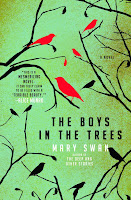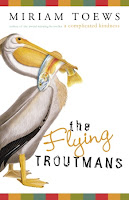 I think I tweeted last week about being so caught up in one of Rebecca Rosenblum’s stories from Once that I completely missed the fact that our VP was standing right next to me on the subway. He laughed and said, “Good book?” when I finally realized he’d been there for almost my entire ride. And they are just that addictive, drawing you in from almost the first sentence, creating a world that sits slightly askew of the one you live in everyday, and then finishing completely.
I think I tweeted last week about being so caught up in one of Rebecca Rosenblum’s stories from Once that I completely missed the fact that our VP was standing right next to me on the subway. He laughed and said, “Good book?” when I finally realized he’d been there for almost my entire ride. And they are just that addictive, drawing you in from almost the first sentence, creating a world that sits slightly askew of the one you live in everyday, and then finishing completely.
I’m consistently amazed by the innovative ways young writers have when looking at the world. Rosenblum’s characters — people waiting for the bus heading to awful jobs, young immigrants, a family struggling to make sense of their situation — are atypical. And yet, how often do you sit on the bus completely oblivious to the girl wearing three inch heels who carries on up Landsdowne after we all pile off and into the subway? But those people, sometimes lonely, sometimes burdened, always intriguing, make up the core of her characters. There’s always something to explore in Rosenblum’s world, and her keen writer’s eye leaves little untold.
In the end, I suppose picking out one or two favourite stories might be the way to go, but it’s hard when they’re all so different and so, well, good. If I had to choose, I’d say my absolutely favourite would been “Linh Lai.” A young immigrant girl who lives with her relatives tries to navigate her new world, holding tight to some very special talents, she gets a part-time job at a restaurant that is frequented by more than a few characters in the book. Charming, whimsical and full of great sneakers, the story stood out for me. But I honestly enjoyed every single story, their sad undertones, their slightly awkward protagonists, and the thorough ache of lives bursting with the kind of promise that never seems to quite bubble to the surface as it should.
READING CHALLENGES: Rebecca Rosenblum lives and writes in Toronto, so I’m counting Once as a part of this year’s The Canadian Book Challenge. I’m way off in terms of books I picked at the outset but I don’t think it matters as long as I’m still within my “for the ladies” theme.
WHAT’S UP NEXT: Blogging Lee Gowan’s Confession, which I might leave until tomorrow so I can think about the book a little more… For now, I think I might start my Harlequin assignment for this week and then watch a movie. Foggy-cold-head makes for very poor book reviewing.








